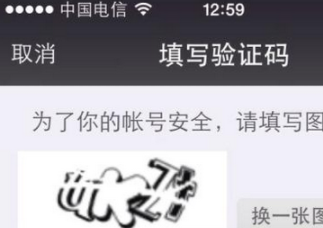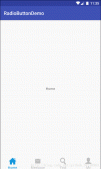学习了,三天的Android 蓝牙开发,开始是一头雾水,看着别人讲的Google官方的demo感觉很容易,所有自己也尝试写一个很简单的聊天demo.可是想的很简单,自己做起来也花了,将近一天的时间才搞定这个基本的流程设计.下面是几点心得后面再贴代码
1)写一个简单的demo也好,记得一定需要有总体的流程,才开始抠代码
2)既然是demo毕竟就是新的知识,代码中间的log点一定\不能少,这是你快速调试的利器
3)还是thinking in java 里面的那句话,思考什么是可变的,什么是不可变的,然后分开,这样来实现代码的封装,感觉很不错了.只是现在感觉还是很难想明白
4)开始思考以面向对象的流程处理问题,需要怎么弄,也是封装代码的一种思想
蓝牙聊天的基本功能:
1.实现一对一蓝牙连接
2.实现一对一聊天
很简单的功能,思路看着也很清晰,可是深入去写,才知道,水还是深度的,java不熟的话.
此处基本的如何打开蓝牙不在复述,请自行百度.
思路:
1)初始化,打开手机的蓝牙,开始蓝牙服务器线程,等待连接
2)配对,获取某台手机的蓝牙address地址.
3)开启连接线程连接手机蓝牙
4)连接成功后,开启,蓝牙聊天的线程,进行聊天的通讯.
上面四步是主要思路,其中存在着几个细节的地方,就是在开发中某些逻辑问题,线程间的安全问题,也是需要好好处理的. 让我感受比较深的地方是,一对一聊天,相当于,首相每台机器都可能作为服务器在进行通讯,所以一开始开启了两个服务监听,一旦有一个接入进来,这里需要弄清楚哪个是接入对象,哪个是被接入对象, 没有作为服务端的,可以把服务端线程关闭掉。
下面贴点代码
|
1
2
3
4
5
6
7
8
9
10
11
12
13
14
15
16
17
18
19
20
21
22
23
24
25
26
27
28
29
30
31
32
33
34
35
36
37
38
39
40
41
42
43
44
45
46
47
48
49
50
51
52
53
54
55
56
57
58
59
60
61
62
63
64
65
66
67
68
69
70
|
/** * 客户端启动连接线程 * 通过蓝牙的mac地址获取连接 * @author Administrator * */ private class ConnectThread extends Thread { private BluetoothDevice mDevice; private BluetoothSocket btSocket = null; public ConnectThread(String address) { // TODO Auto-generated constructor stub mDevice = mBluetoothAdapter.getRemoteDevice(address); } @Override public void run() { // TODO Auto-generated method stub connect(mDevice); } private void connect(BluetoothDevice btDev) { Method creMethod; try { creMethod = BluetoothDevice.class.getMethod("createBond"); creMethod.invoke(btDev); } catch (Exception e) { // TODO Auto-generated catch block e.printStackTrace(); } try { btSocket = btDev.createRfcommSocketToServiceRecord(MYUUID); System.out.println("========" + "start connect"); Log.d("BlueToothTestActivity", "开始连接..."); btSocket.connect(); mClientSocket = btSocket; isConnected=true; mHandler.sendEmptyMessage(SUCCESS_SERVICE_BEGIN_TALKING); // 作为客户端 关闭 服务端 等待的链接 if (acceptThread != null) { acceptThread.close(); } startTalk(); } catch (IOException e) { // TODO Auto-generated catch block System.out.println("???????????????? close socket"); close(); System.out.println(e.toString()); e.printStackTrace(); } } private void close() { if (btSocket != null) { try { btSocket.close(); mHandler.sendEmptyMessage(FAILED_SERVICE_SOCRCKET); } catch (IOException e1) { // TODO Auto-generated catch block e1.printStackTrace(); } } }} |
|
1
2
3
4
5
6
7
8
9
10
11
12
13
14
15
16
17
18
19
20
21
22
23
24
25
26
27
28
29
30
31
32
33
34
35
36
37
38
39
40
41
42
43
44
45
46
47
48
49
50
51
52
53
54
55
56
57
58
59
60
61
62
63
64
65
66
67
68
69
70
|
/** * 服务端的设计 * 每个蓝牙的客户端先要开启服务端等待接入 * @author Administrator **/ private class AcceptThread extends Thread { private final BluetoothServerSocket mmServerSocket; public AcceptThread() { // Use a temporary object that is later assigned to mmServerSocket, // because mmServerSocket is final BluetoothServerSocket tmp = null; try { // MY_UUID is the app's UUID string, also used by the client // code tmp = mBluetoothAdapter.listenUsingRfcommWithServiceRecord("Fisrt", MYUUID); } catch (IOException e) { mHandler.sendEmptyMessage(FAILED_SERVICE_SOCRCKET); } mmServerSocket = tmp; } public void run() { BluetoothSocket socket = null; // Keep listening until exception occurs or a socket is returned while (isRun) { try { socket = mmServerSocket.accept(); mHandler.sendEmptyMessage(SUCCESS_SERVICE_SOCRCKET); Log.e("TAG", "========== server start ===="); } catch (IOException e) { mHandler.sendEmptyMessage(FAILED_SERVICE_SOCRCKET); close(); } // If a connection was accepted if (socket != null) { // 服务端连接成功,启动聊天线程,通过 同一个 socket 防止多线程赋值出现空值的问题 isConnected=true; mClientSocket = socket; mTalkThread = new TalkThread(); mTalkThread.start(); // Do work to manage the connection (in a separate thread) // 多线程操作小心不安全性 synchronized (BlueConnectService.this) { //close(); } } } } public void close() { isRun = false; try { mmServerSocket.close(); } catch (IOException e) { // TODO Auto-generated catch block e.printStackTrace(); } }} |
|
1
2
3
4
5
6
7
8
9
10
11
12
13
14
15
16
17
18
19
20
21
22
23
24
25
26
27
28
29
30
31
32
33
34
35
36
37
38
39
40
41
42
43
44
45
46
47
48
49
50
51
52
53
54
55
56
57
58
59
60
61
62
63
64
65
66
67
68
69
70
71
72
73
74
75
76
77
78
79
80
81
82
83
84
85
86
|
/** *设计连接成功后的聊天线程 1.建立流,打通连接 2.发送和接收数据 3.显示数据 *需要注意的是聊天的时候,需要同一个socket建立连接才能获取对应的输入输出流 */ private class TalkThread extends Thread { private final BluetoothSocket talkSocket; private final InputStream mIs; private final OutputStream mOs; private boolean isRunning = true; public TalkThread() { // TODO Auto-generated constructor stub talkSocket = mClientSocket; if (talkSocket == null) { System.out.println("================= talkThread erro "); // return; } InputStream is = null; OutputStream os = null; try { is = talkSocket.getInputStream(); os = talkSocket.getOutputStream(); } catch (IOException e) { // TODO Auto-generated catch block try { System.out.println("???????????????? close socket"); talkSocket.close(); CloseUtil.closeStream(is, os); } catch (IOException e1) { // TODO Auto-generated catch block e1.printStackTrace(); } e.printStackTrace(); } mIs = is; mOs = os; } @Override public void run() { // TODO Auto-generated method stub super.run(); byte[] buffer = new byte[1024]; int len; while (isRunning) { try { len = mIs.read(buffer); mHandler.obtainMessage(READ_MESSAGE, len, -1, buffer).sendToTarget(); } catch (IOException e) { // TODO Auto-generated catch block e.printStackTrace(); try { isRunning = false; isConnected=false; System.out.println("???????????????? close socket"); talkSocket.close(); // 需要重启服务器 // 启动服务器 } catch (IOException e1) { // TODO Auto-generated catch block e1.printStackTrace(); } CloseUtil.closeStream(mIs, mOs); } } } public void write(byte[] bytes) { try { mOs.write(bytes); mHandler.obtainMessage(WRITE_MESSAGE, bytes.length, -1, bytes).sendToTarget(); } catch (IOException e) { // TODO Auto-generated catch block e.printStackTrace(); } }} |
以上就是本文的全部内容,希望对大家的学习有所帮助,也希望大家多多支持服务器之家。
原文链接:https://blog.csdn.net/yangxlAndroid/article/details/51614112
















